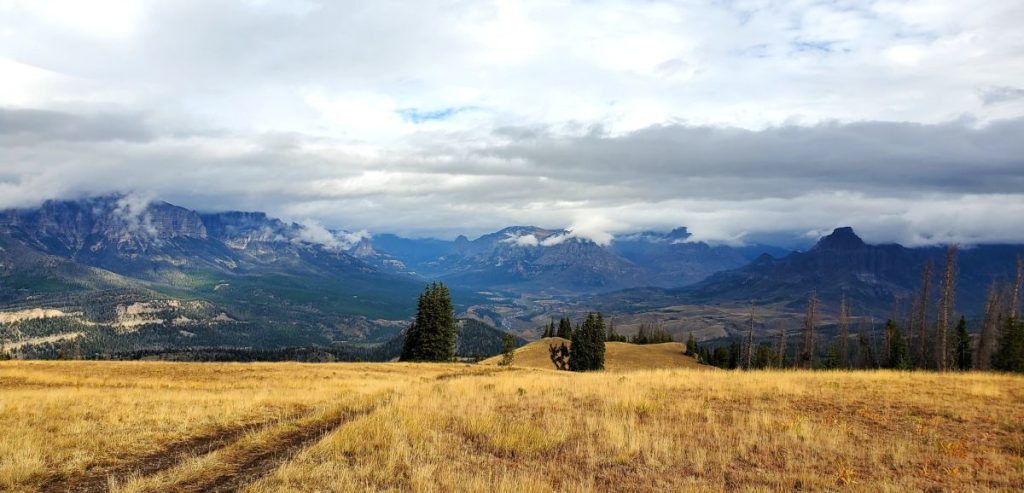Exploring the Archaeological Sites Near Cody, Wyoming
Stroll through the streets of Cody, Wyoming, on your way to Yellowstone National Park and you’ll see historical buildings dating back well over a century.
As you pass by the Irma, the Buffalo Bill Center of the West, and Old Trail Town, you’ll see that much of the Cody culture we know today comes from the period during which American settlers arrived in northwest Wyoming.
But the history of this region goes back much further. For thousands of years, people have hunted, fished, and made their homes in the area that would eventually become Park County, the Shoshone National Forest, and Yellowstone National Park.
To get an idea of just how long people have resided in the region, let’s take a look at three awe-inspiring archaeological sites near Cody.
1. The Horner Site
A National Historic Landmark since 1961 and one of the most accessible archaeological sites near Cody, the Horner Site overlooks where Sage Creek meets the Shoshone River east of. Sitting on the foothills of the Absaroka Moutains, it’s believed that the area surrounding the Horner site was home to many prehistoric buffalo.
A local collector first noticed the archaeological significance of the site in 1939. At the time, the land belonged to Pearl Horner, hence its name. Nine years later, it was decided to notify a Princeton University archaeologist of the finds.
Over a three-year period beginning in August 1949, several excavations were carried out at the Horner site, yielding evidence of hearth areas, scattered charcoal, and burnt bone.
It’s believed that this is where, thousands of years ago, people camped to kill and butcher animals. A number of projectile points and other tools were recovered and, notably, this was the first place where researchers located both Eden and Scottsbluff projectile points.
Unfortuantely, a number of people illegally removed artifacts from the Horner site — not uncommon among the archaeological sites near Cody. Although there have been no excavations here for decades, it’s believed that this site has more to offer.
2. 4,500 Years of History at Dead Indian Campsite
The Sunlight Basin Road was constructed in 1967, and it was during this work that people found what is now known as Dead Indian Campsite.
Like the Horner Site, Dead Indian Campsite was a place where people butchered animals.
In 1969, two years after the site was identified, the University of Wyoming conducted excavations and located a number of stone tools. They also found bones of animals including solves, mountain sheep, deer, elk, and porcupines.
In addition, researchers found antlers inside a stone cairn.
All told, it’s believed that people used the Dead Indian Campsite in multiple eras over the span of some 4,500 years.
The exact location of the site is restricted, likely to prevent tampering or the illegal removal of artifacts.
As one of the prime archaeological sites near Cody, Dead Indian Campsite was added to the National Register of Historic Places in 1974.
3. Mummy Cave and ‘Mummy Joe’
Located about halfway between Cody and the East Entrance of Yellowstone National Park along US 14/16/20, you can find one of the best-known archaeological sites near Cody: Mummy Cave.
Although technically an alcove, not a cave, this site is where researchers in the early 1960s recovered the body of a man beneath a rock cairn. Dubbed ‘Mummy Joe,’ his body was dated to 770 CE.
However, it’s believed that people used this cave for thousands of years before the man was interred there. The artifacts recovered at Mummy Cave span some 9,000 years and include projectile points, Shoshonean artifiacts, and thousands of animal bones.
Sadly, like other archaeological sites near Cody, Mummy Cave saw excavation work before the researchers arrived. Someone dug their earlier, and there’s no telling what they may have removed or how it harmed the researchers’ work.
Added to the National Register of Historic Places in 1981, Mummy Cave is easy to find. Since it’s right off the highway, you can park on the shoulder and walk down along the river, reaching the site in just a few minutes.
There isn’t much to see, but standing amid so much history is quite an experience.










